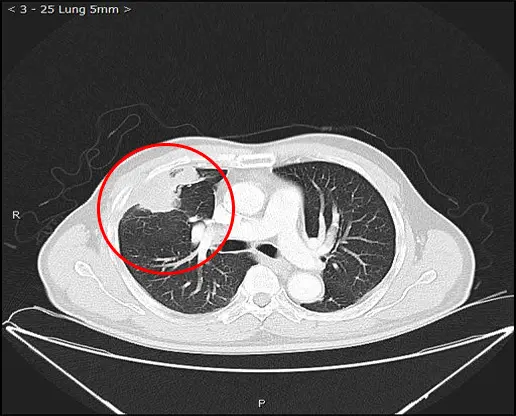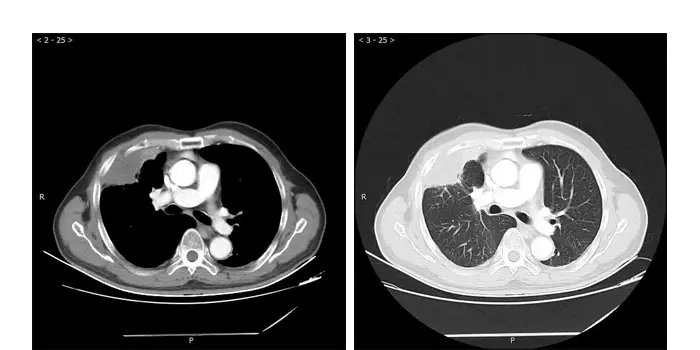(1) The lesion was close to chest wall. CT scan showed that the left upper lobe lung cancer was enlarged.
(2) After treatment by radioactive particles.
(3) No complication during and after surgery.
Cryotherapy, traditionally associated with the treatment of musculoskeletal injuries and skin conditions, is now emerging as a potential therapeutic avenue for respiratory health, specifically targeting lung-related disorders. While cryotherapy has been widely acknowledged for its anti-inflammatory and analgesic properties, its application to the respiratory system, often referred to as "cryotherapy for lungs", is gaining attention in the medical community.
The concept involves exposing the respiratory tract to extremely cold temperatures, typically below -100 degrees Celsius, using techniques like cryoablation or inhalation of cold air. The rationale behind this approach lies in the ability of extreme cold to constrict blood vessels and reduce inflammation. In the context of lung health, this could offer relief for conditions characterized by chronic inflammation, such as asthma, chronic obstructive pulmonary disease (COPD), and even certain respiratory infections.
Research studies exploring cryotherapy for lungs are still in the early stages, but preliminary findings suggest promising outcomes. Cryoablation, a procedure involving the use of extremely cold temperatures to destroy abnormal tissues, has shown potential in treating lung tumors. The precise application of cold to targeted areas can effectively eliminate cancerous cells while minimizing damage to surrounding healthy tissue.
In the case of inflammatory respiratory conditions, inhaling cold air during cryotherapy sessions may help soothe irritated airways and reduce the severity of symptoms. The cold air is thought to constrict the blood vessels in the lungs, decreasing blood flow and inflammation in the airways.
It's important to note that while cryotherapy for lungs holds promise, further research is needed to establish its safety, efficacy, and optimal protocols for different respiratory conditions. The potential risks and side effects, such as bronchospasm or exacerbation of certain lung conditions, also need thorough examination.
As the field of cryotherapy continues to evolve, collaborations between pulmonologists, cryotherapy specialists, and researchers will be crucial in refining techniques and expanding our understanding of how extreme cold, facilitated by advanced cryosurgery machine, can be harnessed to promote lung health. The integration of cryotherapy into respiratory care could offer a novel and complementary approach to existing treatments, ushering in a new era in pulmonary medicine.
(1) The lesion was close to chest wall. CT scan showed that the left upper lobe lung cancer was enlarged.
(2) After treatment by radioactive particles.
(3) No complication during and after surgery.




(1) The lesion was close to chest wall, and no injury of chest wall occurred .
(2) CT scan showed that there was a lesion at the junction of S4 and S5, sized as 15.1×11.8mm.




The article shared a case of percutaneous puncture treatment for small nodules in the inferior lobe of right lung with Cryosurgical System. Professor Zou Yinghua of Peking University First Hospital commented on the case.

The article shared a typical case of percutaneous puncture treatment for right lung metastasis of colorectal cancer with Cryosurgical System. Professor Li Xiaoguang of Beijing Hospital commented on the case.

The article shared a case of percutaneous puncture treatment for lung metastasis of liver cancer with Cryosurgical System. Professor Huang Jinhua, Sun Yat-sen University Cancer Center, commented on the case.





 Hygea Medical Technology Co., Ltd.
Hygea Medical Technology Co., Ltd.